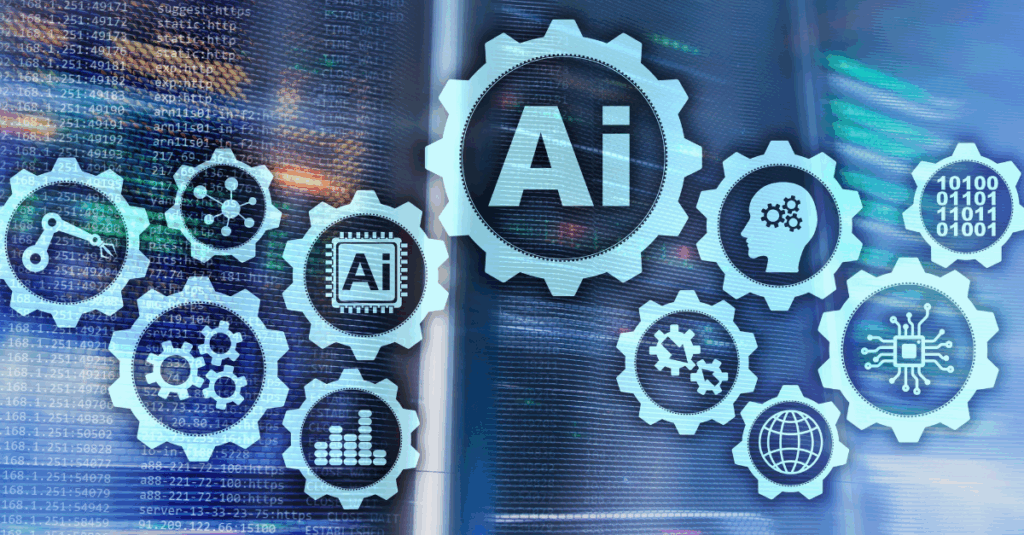AI and the world of work: A real-time snapshot of how national businesses are adopting AI in Israel

Artificial Intelligence is no longer a futuristic idea—it’s a force changing how businesses operate worldwide. Since the explosion of generative AI in late 2022, businesses are rushing to experiment with AI tools, exploring how these technologies can make operations more efficient, increase productivity, and reshape workflows.
However, as AI hype grows, a fundamental challenge arises: how can we accurately measure AI adoption, and what might that reveal about its impact on businesses, workers, and the broader economy? Without reliable data, it is difficult for decision-makers to know whether AI is driving meaningful change or merely being used in limited ways with minimal impact.
This is not a trivial question. Experimenting with free AI tools and deeply embedding sophisticated, paid AI systems should yield very different outcomes in terms of productivity, job creation, and job loss. Yet capturing the complexity of these scenarios in comparable data is challenging. AI evolves rapidly, its applications vary widely across industries, and the line between augmentation and automation is not always clear.
Recognizing this challenge, the Israel Central Bureau of Statistics (CBS), after consultation with experts from the Bank of Israel, the Israel Innovation Authority, and the Israel Democracy Institute, a process that was facilitated by the Permanent Mission of Israel to the OECD, pioneered a dynamic, repeatable survey model designed to capture a real-time snapshot of how national businesses are adopting AI. This agile approach digs deeper than just asking whether businesses use AI. It enquires into how AI integrates into operations, whether it replaces tasks previously performed by employees, and whether businesses rely on free tools or invest in more advanced systems. The result is a living, evolving data source that helps policymakers, economists, and business leaders understand how AI is reshaping the economy in practice.
What the data reveals about AI adoption in Israel
28% of Israeli businesses report using AI. Of these, 17% rely on paid AI tools, while another 11% use free, widely available options. The majority—72%—still report no use of AI at all.
However, this topline figure hides significant differences between industries. High-tech sectors lead in AI adoption, driven largely by the use of paid AI systems.
In stark contrast, construction shows only 6% adoption, while commerce and traditional services fall between 17% and 31%. This gap underscores the deep connection between AI adoption and sector-specific needs, digital readiness, and the types of tasks commonly found within each field.
The tasks being transformed by AI
Among businesses that have adopted AI, 42% primarily use it for routine or technical tasks—automating repetitive, rules-based, or data-heavy functions. A smaller group, around 14%, extend AI into higher-level cognitive tasks that involve decision-making, analysis, or more complex problem-solving. However, 33% say AI isn’t replacing any tasks previously done by humans, indicating that AI generally acts more as an enhancement tool rather than a cause of job displacement for many companies.
The degree to which AI replaces tasks varies greatly across industries. In the high-tech sector, 66% of businesses report that AI is taking over tasks formerly performed by workers, mainly focusing on automating technical or repetitive duties. Conversely, the situation in commerce is nearly the opposite: 70% of companies using AI say the technology hasn’t replaced any tasks. This implies that AI in this sector is currently more of a supportive or experimental tool than a catalyst for fundamental change.
Employment impact is less dramatic than expected
Despite common fears that automation will eliminate some jobs, the survey reveals that 89% of businesses report no change in employment due to AI. Only about 5% avoided hiring thanks to efficiency gains from AI, and 4% reported reducing staff, with roughly half of those reductions affecting highly skilled roles. Only 1% of businesses reported an increase in employment directly linked to AI adoption.
These figures suggest that while AI is beginning to reshape some workflows, its broader labour impact remains modest. The absence of any reported increase in employment may also be a worrying sign for the future, as historically, some transformative technologies not only replaced jobs but simultaneously generated new employment opportunities—a pattern that is not yet visible here with AI adoption.
AI growth is still to come
When asked about their plans for the next six months, 27% of businesses say they expect to either start or continue using AI. Another 29% remain undecided, while 44% report no plans to adopt AI in the near future. Unsurprisingly, the growth trajectory is steepest in the high-tech sector, where around 57% of companies anticipate expanding or initiating AI use. In contrast, traditional industries show a more cautious approach, with only 15–30% signalling plans to adopt AI.
Paid AI leads to greater impact
Businesses that pay for AI tools are six times more likely to report workforce effects, positive or negative, than those that rely solely on free tools (18% versus 3%). Paying for AI typically signals deeper integration of the technology into everyday workflows, which boosts automation, reshapes core processes, and can influence staffing decisions. However, it is also possible that the causality runs in the opposite direction: businesses with higher digital maturity or more complex needs may be more likely to invest in paid AI tools, enabling them to apply AI to more impactful and sophisticated tasks.
What this means for policymakers and businesses
The employment impact is nuanced, affecting both low- and high-skilled roles in different ways, and the broader picture reveals signs of a gradual yet inevitable transformation. High-tech sectors are clearly leading the way, while traditional industries remain cautious, though not averse to change. For now, AI use appears to be more focused on task augmentation than full job replacement. However, that balance may shift as technologies improve.
This evolving landscape underscores the importance of dynamic, repeatable measurement. AI is not static, and it is accelerating, changing what is possible every few months. Tools like Israel’s Agile AI Survey are crucial for ensuring that policymakers, businesses, and economists are not operating in the dark. With timely, detailed data, they can track the relationship between AI, jobs, and productivity in near real-time, making informed decisions about how to navigate the future of work. In an era defined by rapid technological change, data-driven policymaking is not merely an advantage—it is a necessity.

































